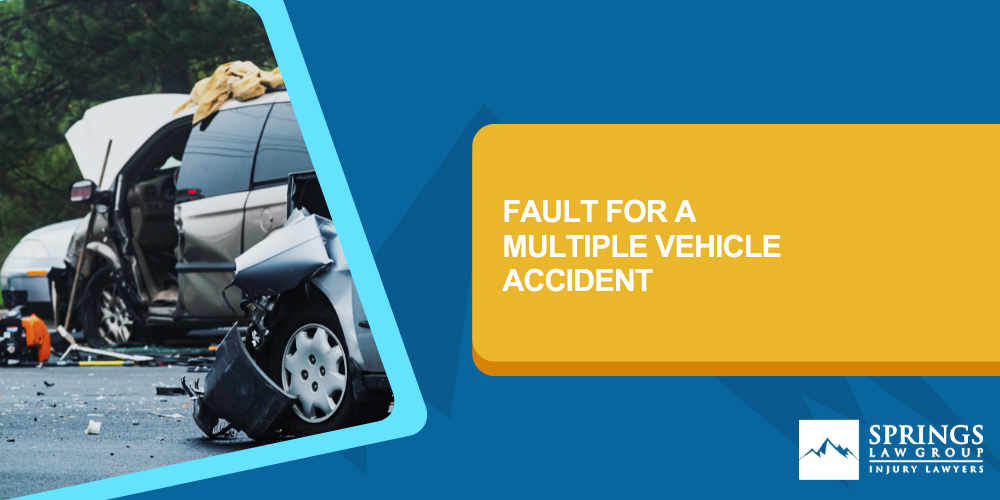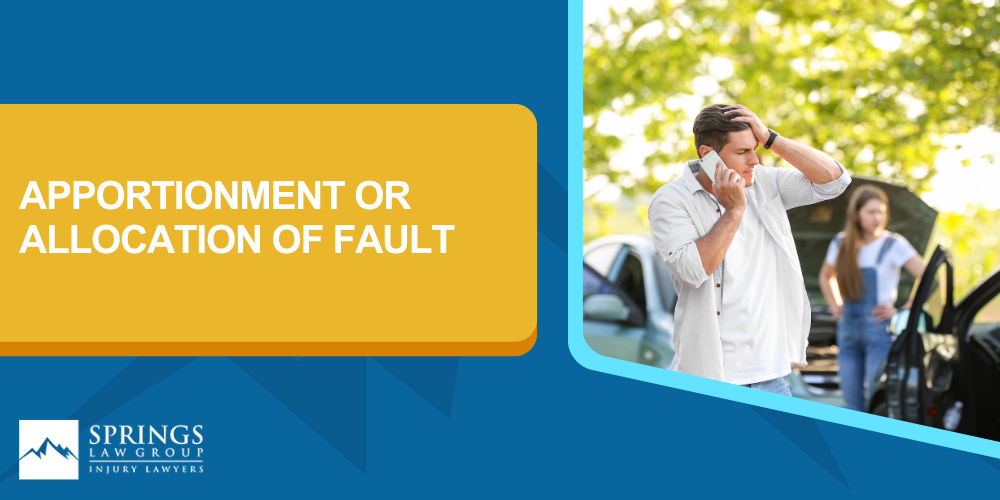Fault for a Multiple Vehicle Accident

When three or more vehicles are involved in an accident, it may be more difficult to determine who is at fault for the accident. In addition, under Colorado law, there are different rules for determining and sharing fault.
To figure out who is at fault for a multiple-vehicle accident, you need to keep in mind a few important legal doctrines.
Presumptions
The law will presume negligence (fault) under certain circumstances. A presumption of negligence means that, if you disagree with the presumption, you must prove that the presumption does not apply. Most commonly, if one car rear-ends another, the law will presume that the driver of the rear vehicle was negligent. In addition, when a driver is on the wrong side of the road at the time of a collision, the law will presume that driver was negligent. Another presumption is that, if brake failure was the cause of an accident, such failure was due to the driver’s lack of due care.

There are other presumptions that may apply, but the idea here is that, depending on the facts of your multiple-vehicle accident, one or more presumptions of negligence or fault could arise, and if you think they are incorrect, you’ll need to come up with the proof to show they shouldn’t apply to your accident.
Contributory Negligence
If you were hurt in an accident, but you were partially at fault (“contributory negligence” means your negligence contributed to the occurrence of the accident), your recovery could be reduced, or eliminated altogether, depending on your degree of fault.
In Colorado, if you are at least equally at fault, then you cannot recover anything for your injuries. If you are less than 50% at fault, but still partially at fault, then your compensation is reduced by the percentage of your fault.

Thus, if a jury found that the accident was 30% your fault, and you had $10,000 in damages, then your damages would be reduced by 30%, so you’d only recover $7,000.
In an accident with multiple vehicles, it’s quite possible that contributory negligence could operate to reduce or eliminate your damages. For this reason, we recommend you consult with an experienced personal injury lawyer, such as Springs Law Group, to discuss the effect of contributory negligence on your ability to recover compensation for your injuries.
Apportionment or Allocation of Fault
In a simple multiple vehicle accident, one driver may mess up and cause other vehicles to collide with one another. For example, one driver rear-ends another, propelling that vehicle into a third. In that case, the driver who started the chain reaction would usually be the only at-fault driver.
Your injury claim could get even trickier if multiple drivers were negligent. For example, if two vehicles slid into yours because they were both driving too fast for icy conditions, then you may need an experienced team of experts to say which injuries were related to which collisions. Your experts could put forth a theory of apportionment or allocation of fault—allocating injuries and damages to each of the at-fault drivers. Experts would be helpful because most jurors are not going to have the education, training, and experience necessary to arrive at such conclusions without help.

If you think your injuries were caused by the mistakes of more than one driver, then we recommend you consult with an experienced personal injury attorney, such as Springs Law Group, to develop a strategy to prove your claim. Otherwise, you could have a difficult time persuading an insurance company, judge, or jury of your view on how damages should be divided among the negligent drivers.
Conclusion
Multiple vehicle accidents present complex issues of fault and apportionment and allocation. Certainly, in a multiple vehicle accident, you can expect multiple theories and disagreements about who’s at fault and why the accident occurred. The police may issue citations but that doesn’t necessarily control how an insurance company or jury views the accident.

For these reasons, we recommend you consult with an experienced personal injury attorney, such as Springs Law Group. We offer free initial consultations to discuss the unique facts of your accident.
